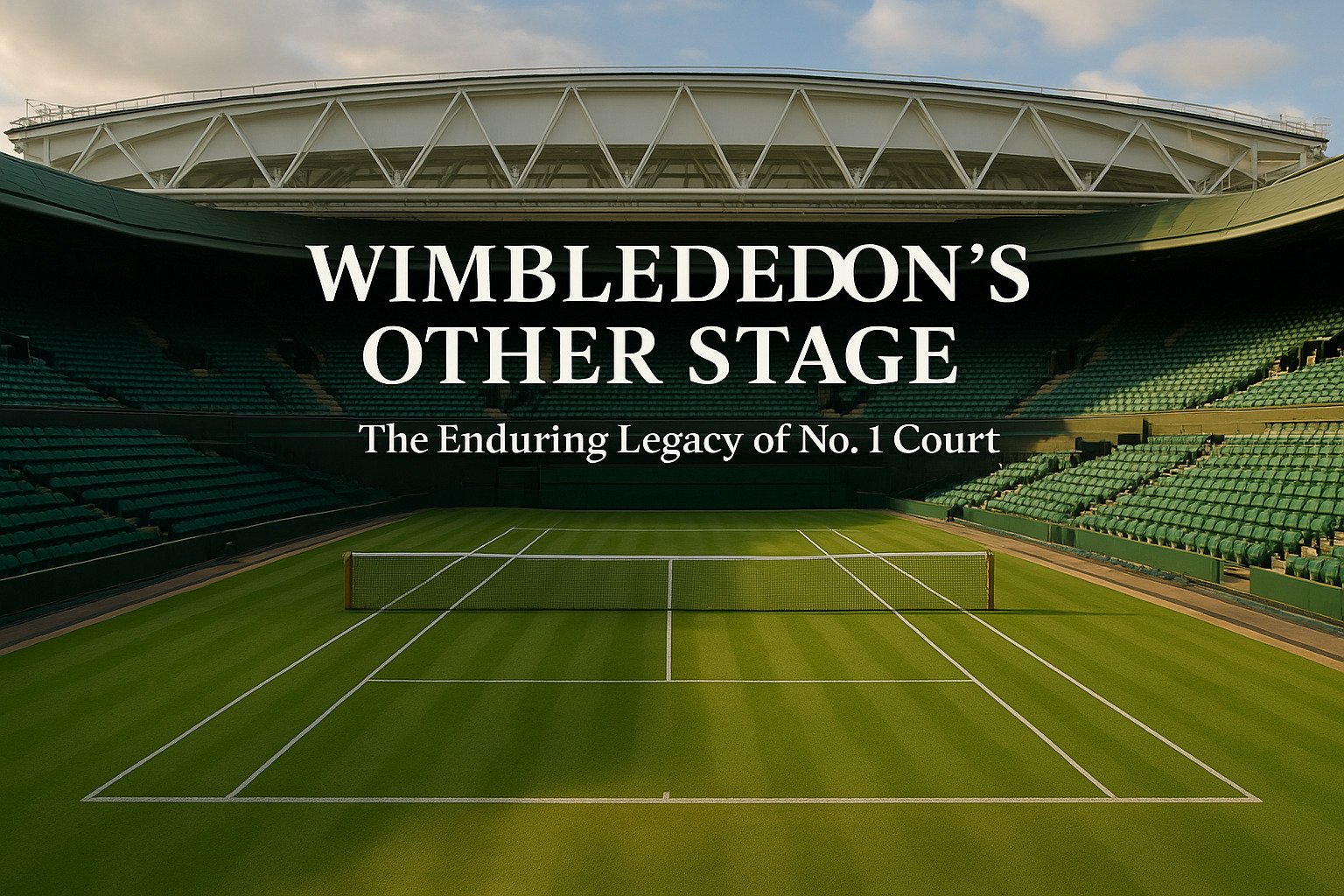
In the world of tennis, some venues are more than just playing surfaces; they are hallowed grounds, echoing with the ghosts of epic battles and legendary champions. While Centre Court at Wimbledon rightfully holds a mythical status, its sibling, No 1 Court, possesses its own unique and powerful legacy. It is a theater of dreams in its own right, a place where tennis history is not just made, but profoundly felt.
For decades, No. 1 Court has served as the perfect counterpart to Centre Court’s formal grandeur. It has a reputation for a slightly more boisterous and intimate atmosphere, creating a cauldron of energy that has both unnerved and inspired the world’s greatest players. This is where rising stars often announce their arrival and where established champions have been tested to their limits.
Table of contents
A History of Evolution
The story of No. 1 Court is one of change and adaptation. The original court was built in 1924, adjacent to Centre Court, and for over 70 years it was the stage for countless memorable moments. Its smaller capacity and open-air design created a special connection between the players and the crowd. Fans felt closer to the action, and the roars of approval or gasps of shock seemed to reverberate with greater intensity.
However, as the popularity of the sport soared, the need for a modern, larger venue became clear. In 1997, a new No. 1 Court was unveiled in a different location within the All England Club grounds. This state-of-the-art stadium was a marvel of engineering, designed to offer superior sightlines and amenities for a larger audience. While some feared the unique atmosphere of the old court would be lost, the new arena quickly established its own identity. Then, in 2019, it underwent another significant transformation with the addition of a retractable roof, mirroring the innovation of Centre Court and ensuring uninterrupted play regardless of London’s unpredictable weather.
Architectural Grandeur Meets Intimate Atmosphere
The modern No. 1 Court is a masterpiece of stadium design. Its circular shape creates a coliseum-like effect, focusing all attention on the pristine grass rectangle at its heart. With a seating capacity of over 12,000, it is a grand stage, yet it manages to retain a sense of intimacy that its predecessor was famous for. The acoustics are superb, amplifying every thud of the ball and every cheer from the crowd, creating an electric environment for both players and spectators.
The retractable roof is its crowning feature. A complex structure of steel trusses and translucent fabric, it can close in under 10 minutes, bringing the outdoors in and allowing play to continue under lights late into the evening. This feature has not only weatherproofed the court but has also added a new dimension of drama, with primetime matches under the lights becoming a thrilling part of the Wimbledon experience.
A Stage for Unforgettable Drama
No. 1 Court has been the backdrop for some of the most memorable matches in Wimbledon’s history. It’s where underdogs have triumphed and where epic five-set thrillers have unfolded. It was on the old No. 1 Court that a 17-year-old Boris Becker announced his explosive talent to the world. It’s where John McEnroe’s famous “You cannot be serious!” outburst occurred, a moment that is now etched in tennis folklore.
The new court has continued this tradition. It witnessed the marathon quarter-final between Juan Martín del Potro and Marin Čilić and has been the scene of countless dramatic comebacks and heart-stopping tiebreakers. It’s often the place where the day’s schedule overflows with talent, giving fans a chance to see multiple top-seeded players in a single session. For many rising players, a victory on No. 1 Court is a rite of passage, a sign that they have truly arrived on the biggest stage.
More Than Just a Second Court
To dismiss No. 1 Court as merely the “other court” is to misunderstand its significance. It plays a vital role in the ecosystem of The Championships. It eases the scheduling pressure on Centre Court, provides a world-class platform for a wider range of players, and offers a distinct but equally captivating viewing experience. Its identity is intertwined with that of Wimbledon itself—a blend of tradition and innovation, of formal respect and passionate energy.
For players, winning on No. 1 Court is a career highlight. For fans, a day spent in its stands is an unforgettable experience. It is a place where legends are tested, new heroes are born, and the enduring drama of tennis is played out in spectacular fashion. It is, and always will be, one of the most iconic stages in all of sport.
FAQ’s
The modern No. 1 Court was opened in 1997, replacing the original court that had been in use since 1924. This new stadium was built to accommodate a larger audience and provide better facilities.
No. 1 Court has a seating capacity of over 12,000 spectators, making it the second-largest show court at the All England Club.
Yes. A retractable roof was added to No. 1 Court and became fully operational in 2019. This allows for continuous play during rain and enables matches to be held under lights in the evening, just like on Centre Court.
While both are premier show courts, Centre Court is the main stage, traditionally hosting the finals and matches involving top seeds. No. 1 Court has a slightly different, often more lively, atmosphere and hosts a wide array of high-profile matches throughout the tournament. Its circular design also offers a unique, coliseum-like viewing experience.
Absolutely. The original No. 1 Court was where John McEnroe had his famous “You cannot be serious!” outburst in 1981. It has also been the stage for many breakthrough performances from rising stars and countless epic five-set battles that have become part of Wimbledon lore.
No. 1 Court is crucial to the Wimbledon Championships. It provides a second world-class stage, easing scheduling pressure on Centre Court and allowing more fans to see top-tier tennis. For many players, winning on No. 1 Court is a significant career milestone, marking their arrival at the top of the sport.





